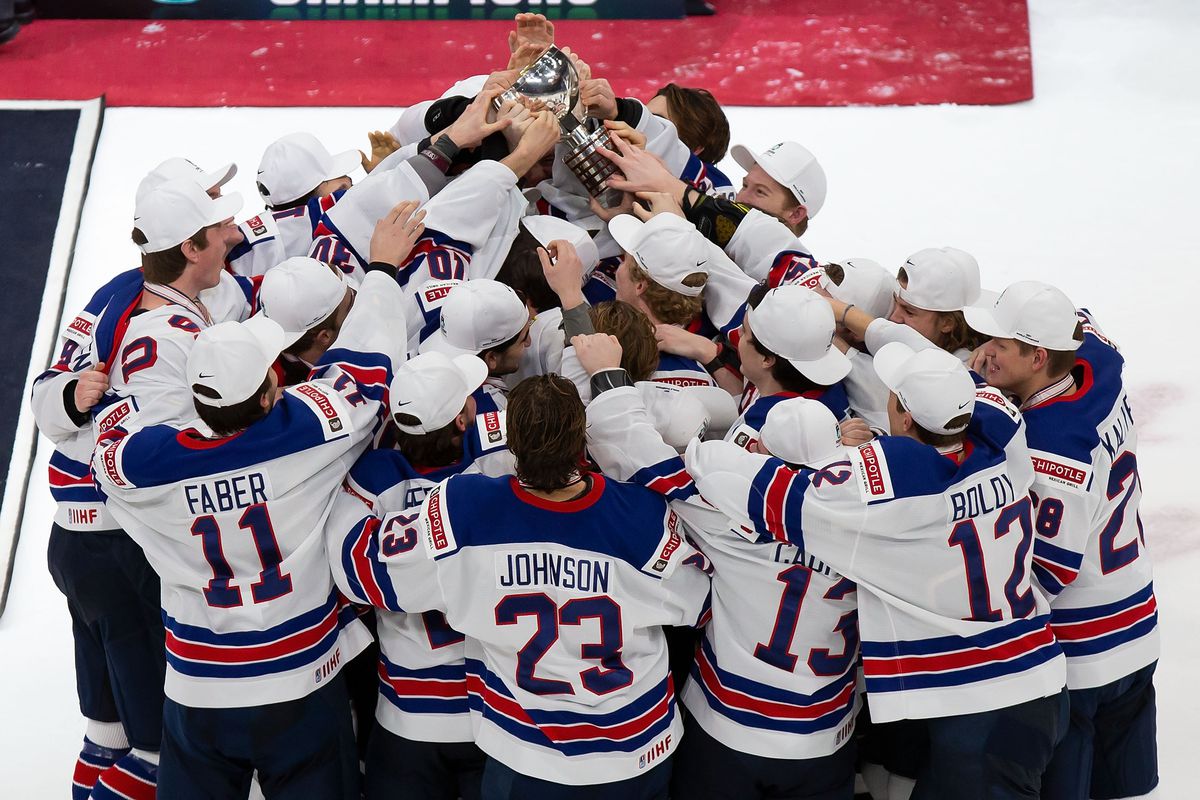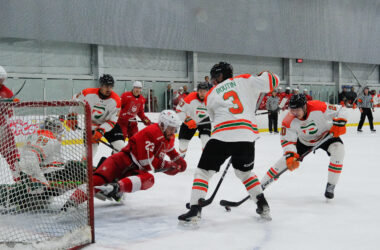The World Junior Hockey Championship, an annual global ice hockey tournament organized by the International Ice Hockey Federation, wrapped up on Jan. 5 after 12 days of fierce competition. This year, the competition was hosted in Edmonton and Red Deer, welcoming teams from 10 different countries. The tournament was carried out in a bubble, requiring teams to quarantine before meeting to play and without an audience. The tournament maintained its “best on best” format, in which countries send their best players under 20 years old to compete for the gold medal. The championship also serves as a platform for drafted NHL players to be evaluated by their teams and undrafted players to gain exposure, giving fans a glimpse of future NHL prospects. Team Canada, the reigning champions, has won 18 gold medals—the most of any country.
Canada opened the tournament by defeating Germany in a whopping 16-2 score. However, the German team could only form a roster of 14 players after eight players testing positive for COVID-19. Canada topped its competition pool after the preliminary round, moving on to defeat the Czech Republic in the quarter finals and Russia, the 2020 silver medalists, in the semi finals to reach the gold medal game for the second consecutive year. While Canada had easier competition for the preliminary rounds, the Americans faced tougher competition in the Czech Republic, Sweden, and Russia, and won games by significant margins, defeating Czech Republic 7-0, and Sweden 4-0. This gave the United States good practice and a confidence boost before they eventually faced Canada in the gold medal game.
“I honestly don’t think [Canada] ha[s] been tested with a real team yet,” said United States centreman Trevor Zegras in a pre-game interview with TSN. “I think we are going on all cylinders right now, and I think we’re going to catch them by surprise.”
Zegras was the star of the final, with a goal and an assist leading the U.S. to a 2-0 victory. Zegras, a 2019 first round draft pick for the Anaheim Ducks, was named tournament MVP and was the top scorer of the tournament with seven goals and 11 assists. American goaltender, Spencer Knight, who is considered one of the best goaltending prospects in hockey, blocked 34 shots for his third shutout of the tournament. The United States’ performance in the final was indeed representative of their dominance throughout the tournament, as well their dominance as a program in general, winning four gold medals in the past decade.
A large part of the success of the United States junior team can be attributed to its training and scouting program—the National Team Development Program (NTDP). USA Hockey founded the program in 1996 as a way to identify elite ice hockey players under the age of 18 and to centralize their training. This training has helped the United States junior team in working together cohesively.
“My time spent at the NTDP was a big turning point in my career as it helped to achieve my goals,” New York Rangers defenceman Jack Johnson said in a testimonial to the NTDP. “I not only developed on the ice, but off the ice as well. The training is second to none, and the chance to represent your country is the greatest feeling in all of sports.”
The rivalry between Canada and the U.S. seems like it will only become stronger. With development programs like the NTDP in the United States, the heightening level of competition in Junior Hockey can only lead to an exciting future for international ice hockey.









